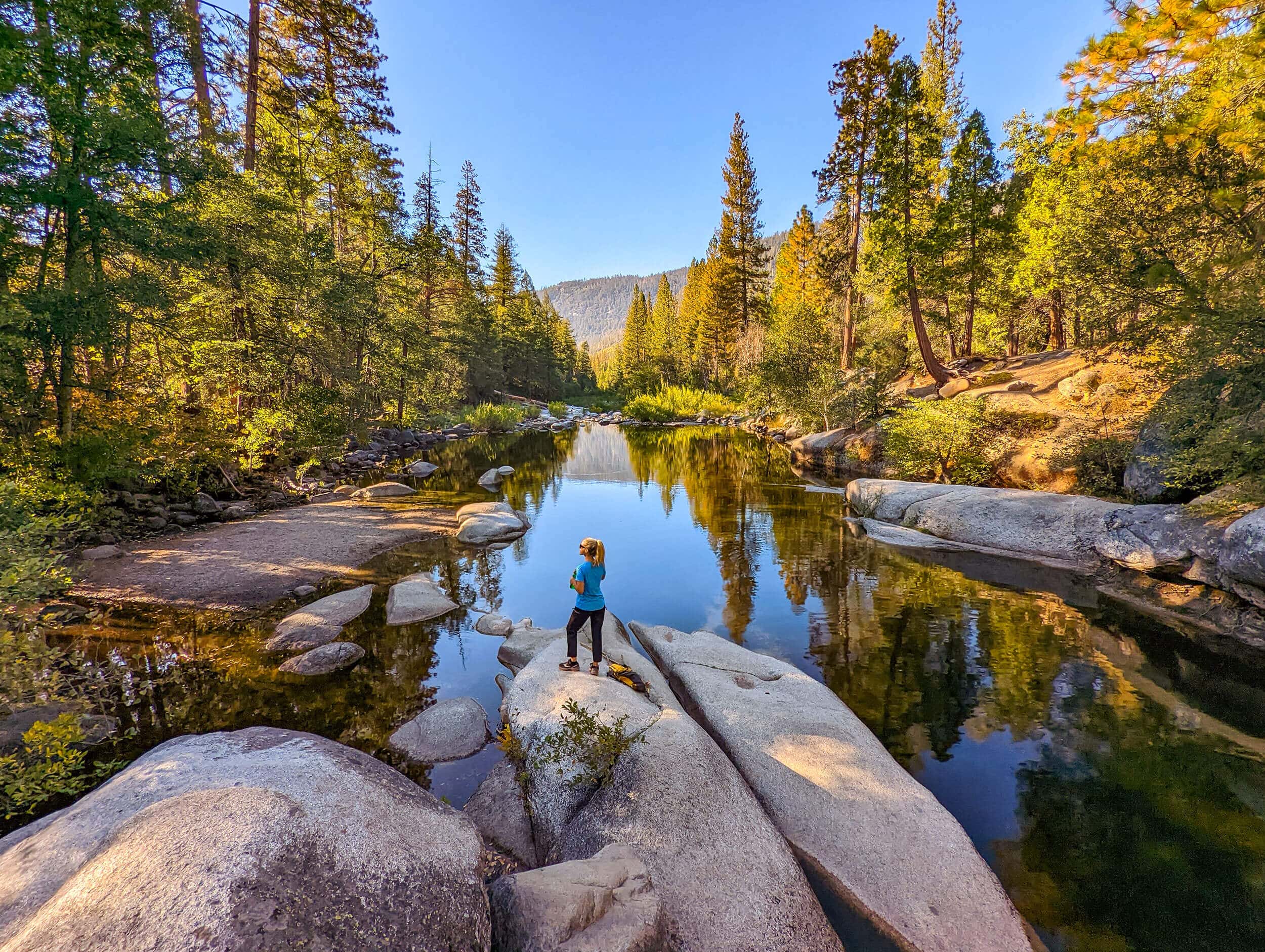Yosemite Mariposa County’s attractions range from snow-capped alpine peaks and Giant Sequoia to titanic granite geology and 2,000-foot waterfalls. Tucked into a golden basin between it all is Wawona – Yosemite’s storybook town.
Wawona, CA provided a year-round refuge for Native Americans, pioneers, and early travelers heading to and from Yosemite Valley. Today, this under-the-radar hub of the Southern Yosemite region offers a triple play of history, recreation, and visitor amenities – just a few miles down Highway 41 from Yosemite’s Southern Entrance. There’s also something special about Wawona that encourages you to gear down and savor this splendid basin of Sierra beauty.
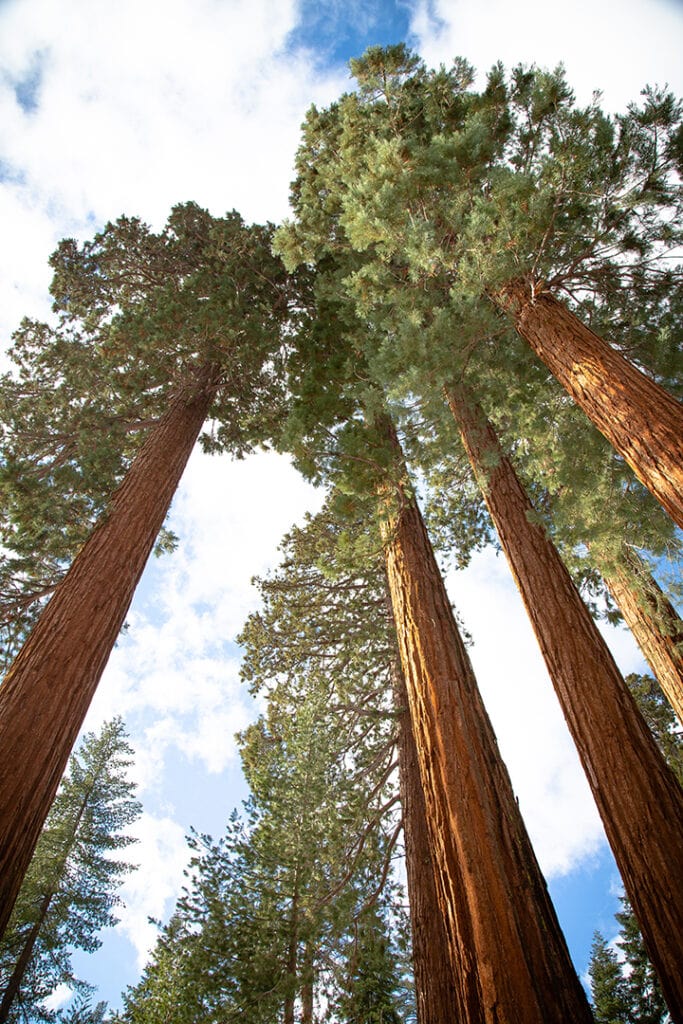
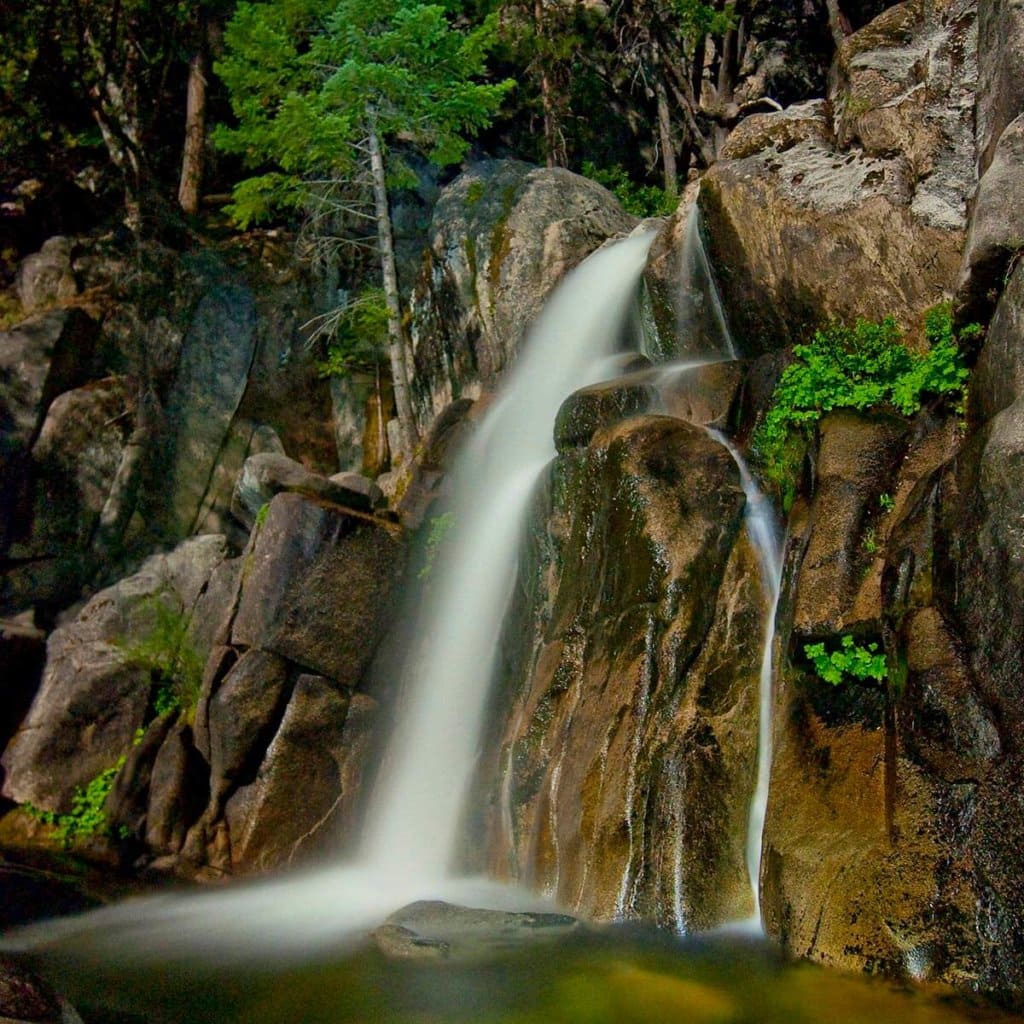
Wawona Things to Do
Situated at 4,000-ft. elevation (the same as Yosemite Valley), Wawona has a bounty of four-season recreation to offer visitors today. From hiking to history, horseback riding and golf, Wawona deserves to earn a day (or three) on every Yosemite Mariposa County itinerary.
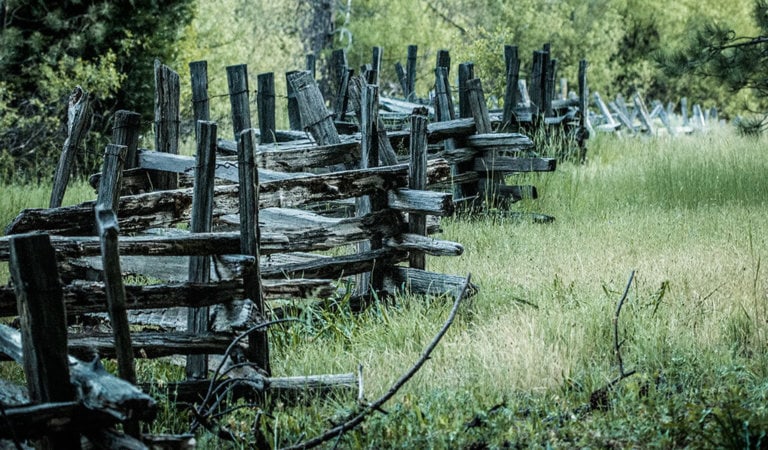
The Wawona Meadow Loop Trail starts across from the Wawona Hotel and orbits one of the largest mountain meadows in the entire High Sierra. In spring it’s dancing with wildflowers and come autumn, the trees along the path alight with fall colors framed by firs. Look around to discover dozens of Native American mortars in the flat rocks overlooking this riparian meadow. Because the trail was once a paved road, this is one of the few trails in Yosemite where horses, leashed pets, and bicycles are allowed.
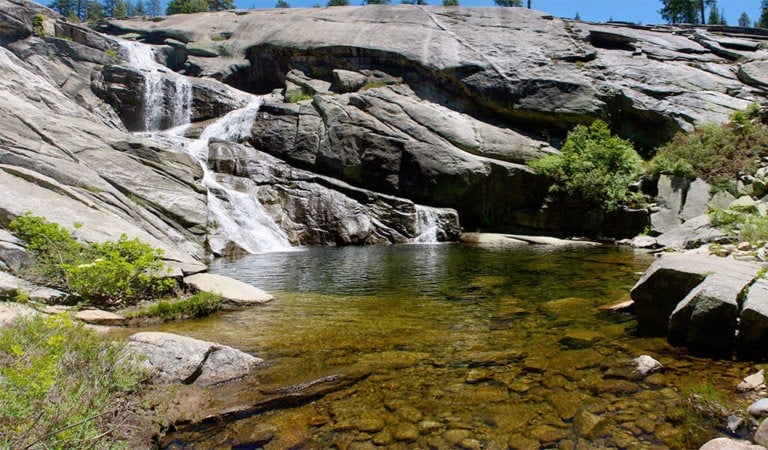
Looking for scenic Yosemite hiking trails?
Ready for a challenge with a big waterfall payoff? Check out the Chilnualna Falls trail at Wawona. The trail begins at an elevation of 4,200 feet and plays hide-and-seek with a series of falls, cascades, and cataracts. The climb is steady and steep for four miles each way, and the falls flow year-round (with peak runoff in May).
Find the trailhead just off the Chilnualna Falls parking area, two miles up from Chilnualna Falls Road.
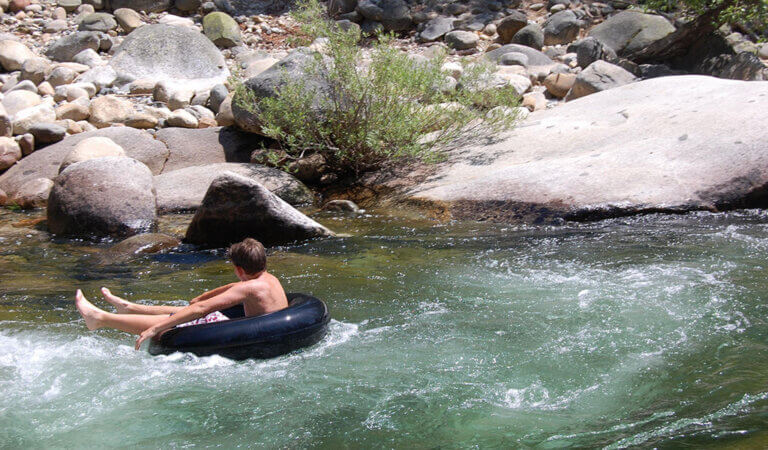
To cool off post-hike, take the plunge at the popular Merced River swimming hole off Chilnualna Road, where there is a large rock for river jumps and an expansive sandbar to spread out your towels.
Visitors and locals alike enjoy tubing on the Merced River’s beautiful rapids, diving into the South Fork, and spreading out a blanket post-swim for a scenic Wawona picnic.
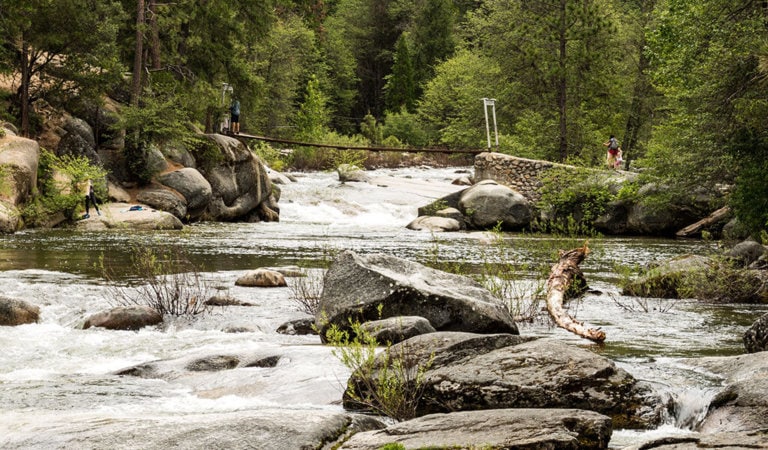
Swinging Bridge at Wawona
Unlike Yosemite Valley’s wildly popular (and now fixed in place) version, the Swinging Bridge at Wawona still has hip-swiveling sway to it. The easy 1.5-mile round-trip hike leads to the bouncy but secure suspension bridge over the South Fork of the Merced River and a gentle cascade of water and granite. There is lots of room to swim here, a rock waterslide upriver, and even some sandy areas for easy wading. Best in summer-fall when the river flow has slowed down, this is a great spot for kids and picnicking.
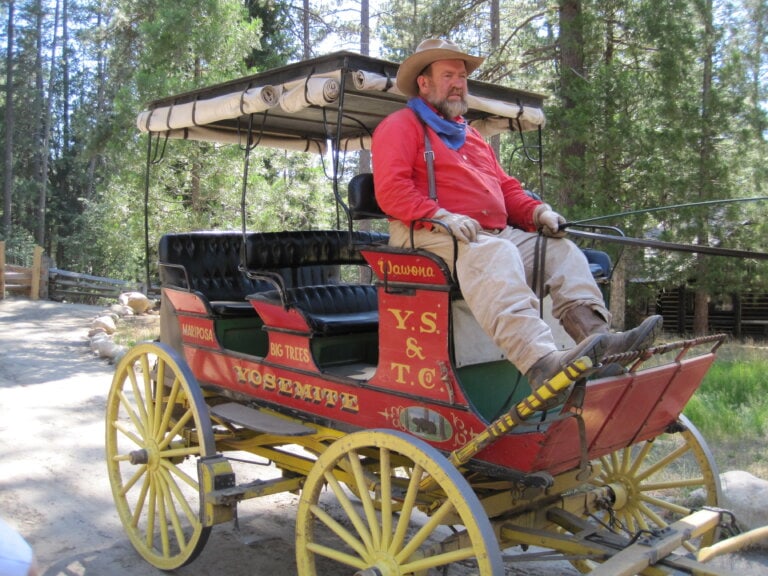
Wawona is one of Yosemite’s hubs for history, and the newly-named Yosemite History Center is a fine place to time-travel through a cluster of historic structures. Recent additions interpret an even more nuanced, multi-ethnic history of Yosemite National Park. In particular, new to the Yosemite History Center is the Chinese Laundry, a long-lost building that was recently dedicated to honor the many contributions of Chinese and AAPI immigrants to the region that had lasting impacts.
Worthwhile walk-throughs at the Yosemite History Center include Wawona’s Covered Bridge – one of the few in California – that dates from the mid-1800s. It’s wildly popular as a setting for wedding photography. The Powder House, a tiny building built with thick granite walls, was used to store dynamite and, briefly, prisoners as a jail. Also on display is a display of authentic wagons and stagecoaches, and a working blacksmith shop where blacksmiths toil over their forges and anvils during the summer.
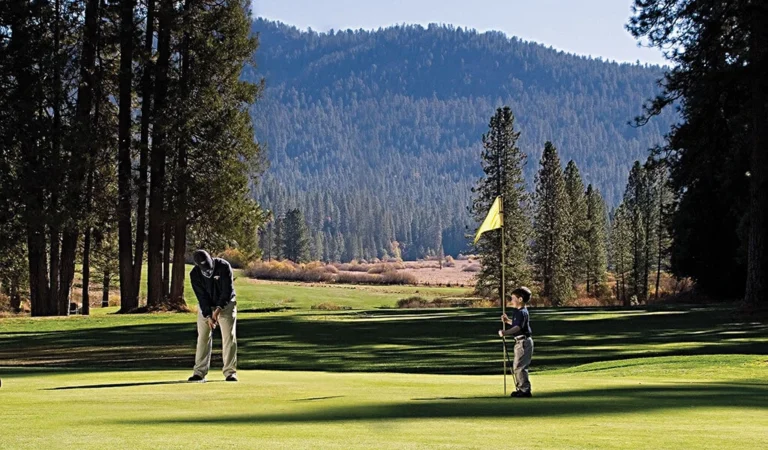
Pursuing par inside a national park is a rare feat, and Yosemite delivers with the Wawona Golf Course. Established in 1918, the Wawona Golf Course challenges the focus of players with distractingly gorgeous Sierra vistas. Artfully blended into Wawona Meadow, the nine-hole, par-35 course measures 3,050 yards and includes two par-five holes. Different tee positions per side provide a par-70, 18-hole format. Fun fact: Wawona is one of the few organic golf courses in the United States. No pesticides are applied to the course and only reclaimed gray water is used for watering the greens. Fore, indeed.
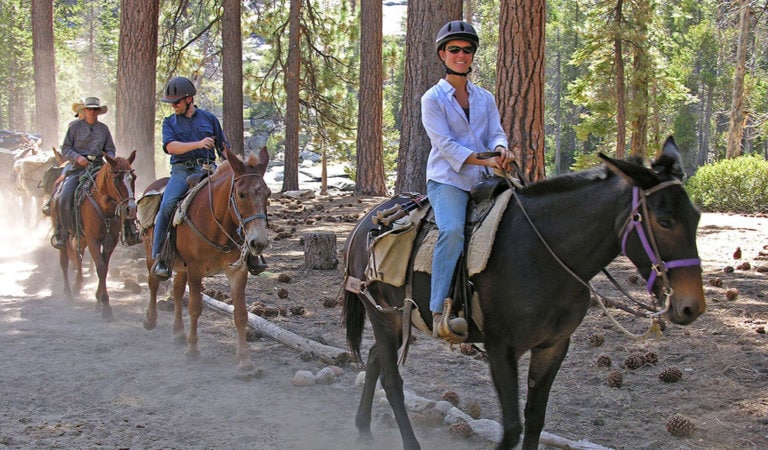
Saddle up! It’s still possible to experience Yosemite National Park from the back of a trusty steed like days of yore. Wawona Stable offers two-hour rides that traverse a historic wagon road through verdant forest with views of the Wawona Hotel and a former Miwuk campsite. For experienced riders, an all-day ride from Wawona to Mariposa Grove is offered. Riding is available seasonally, from May to September.
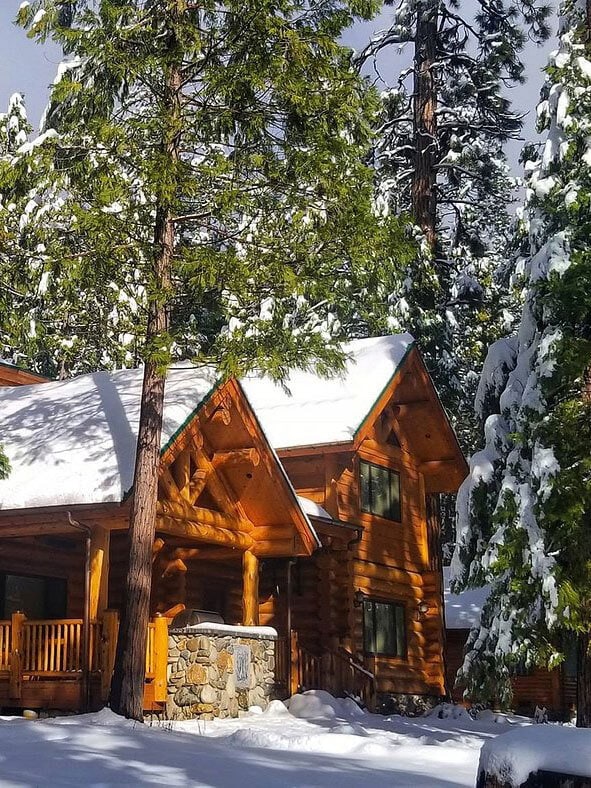
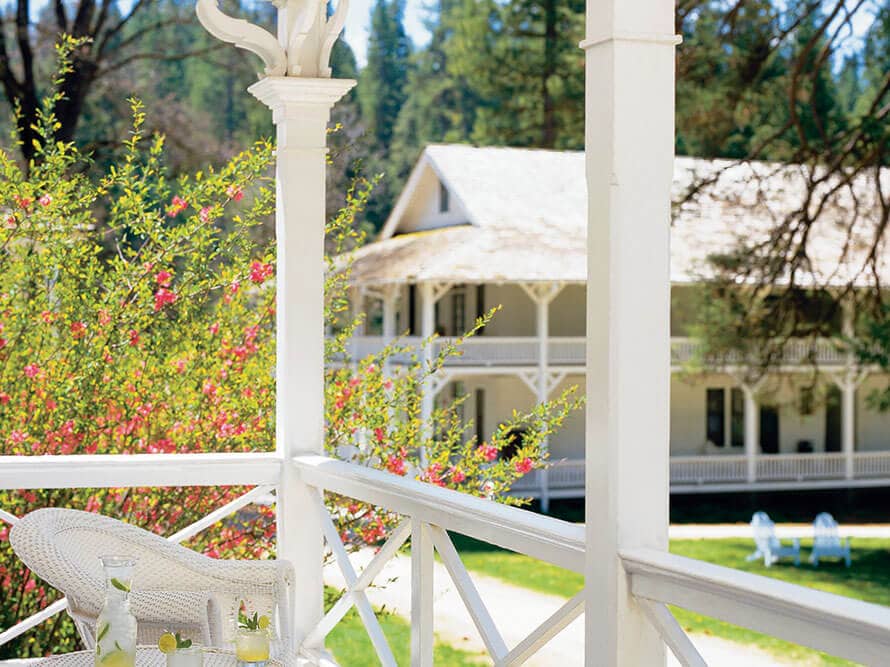
Where to Stay in Wawona
Wawona has historically served as a waystation for travelers to, from and within Yosemite, a time-honored tradition that continues today. The Southern Miwuk called it Pallachun for good reason! With options ranging from an iconic national park lodge to vacation cabin rentals and riverfront camping, Wawona is extra accommodating. Many discover the “slow travel” vibe of Wawona serves as a perfect base camp from which to discover every far-flung corner of Yosemite Mariposa County.
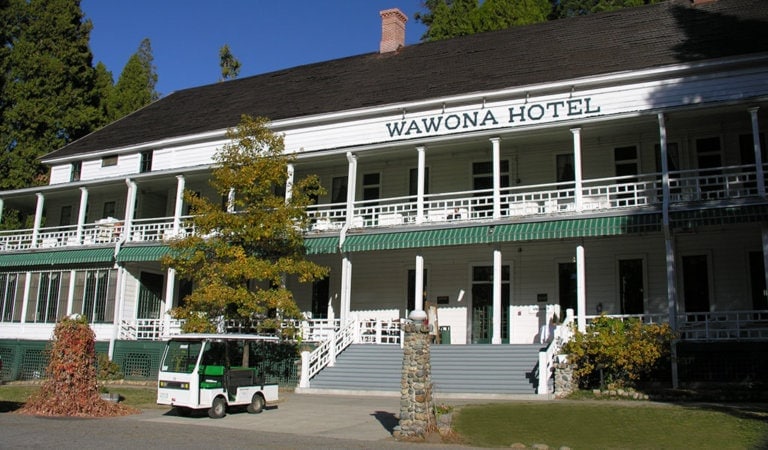
Wawona Hotel
The Wawona Hotel serves as one of Yosemite National Park’s keynote lodges. A National Historic Landmark and one of California’s original mountain resort hotels, the property was originally established in 1856 with the main building opening in 1879. The Wawona hosted President Theodore Roosevelt and was the summer home of artist Thomas Hill between 1886 and 1908. Hill was famed for his Yosemite landscape paintings as well as his 1881 classic, The Driving of the Last Spike.
Today, travelers can select from 50 hotel rooms with private baths and 54 rooms with shared bathrooms. Rooms open up to splendid verandas that wrap around the first and second floors. A far cry from your standard hotel dining room, the The heralded Wawona Dining Room serves breakfast, lunch, and dinner with a side dish of Victorian ambiance. A swimming pool is front and center for seasonal plunges, with the Wawona Golf Course just across the road. The Wawona Hotel is one of the last surviving historic wooden hotels from the early days of national parks. Most burned over the years. Because Wawona closed during the winter, its exposure to fire from wood fires and furnaces was greatly reduced, saving the structure from accidental destruction.
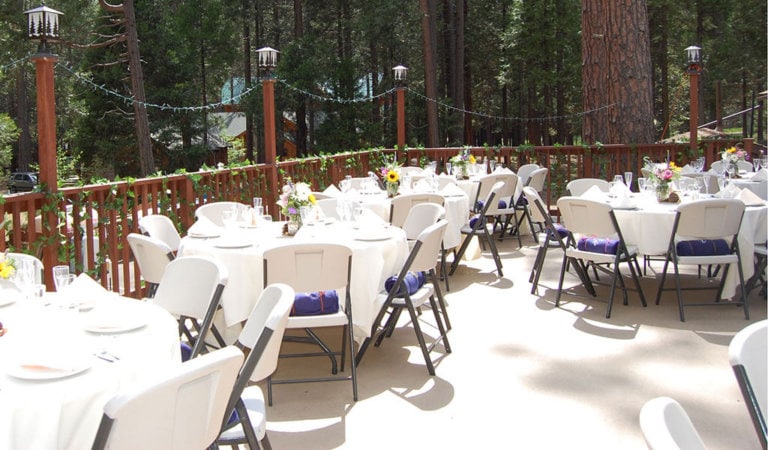
Over the years, Yosemite National Park expanded through areas of privately owned homes and land. These areas include Foresta, Yosemite West, and parts of Wawona. Many of these homes are available for vacation rentals, including homes that are part of The Redwoods In Yosemite or Yosemite’s Scenic Wonders vacation rental management groups.
Cabin Life is well on display at Wawona’s The Redwoods In Yosemite, a collection of vacation home rentals plus a wedding & event center located off Chilnualna Falls Road. There are more than 120 unique Yosemite National Park cabins and spacious luxury homes on offer, many pet-friendly. Options range from cozy one-bedroom cabins to the Yosemite Luxury Estate, an eight-bedroom, seven-bath cluster of grand vacation living. Across the board, there’s more room to spread out, dine in with fully outfitted kitchens, and at many properties, effervesce in a private hot tub under the starry sky.
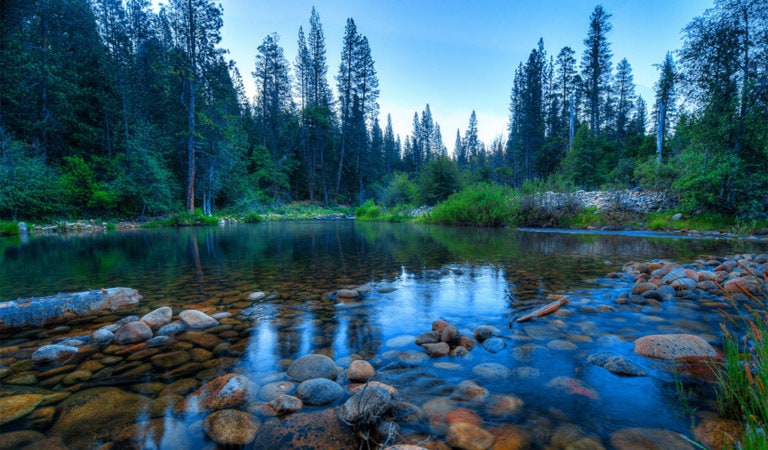
The Wawona Campground is located along a forested bend of the South Fork Merced River just across the street from the Yosemite History Center. There are almost 100 sites with space for tents, RVs, and trailers up to 35 feet. Each site is outfitted with a fire ring, picnic table, food locker, and bathrooms nearby (with water). The setting is dreamy, with a beautiful river running along the length of the campground, majestic granite peaks all around, and an extra-dark sky full of stars, making Wawona one of Yosemite National Park’s most prized campgrounds.
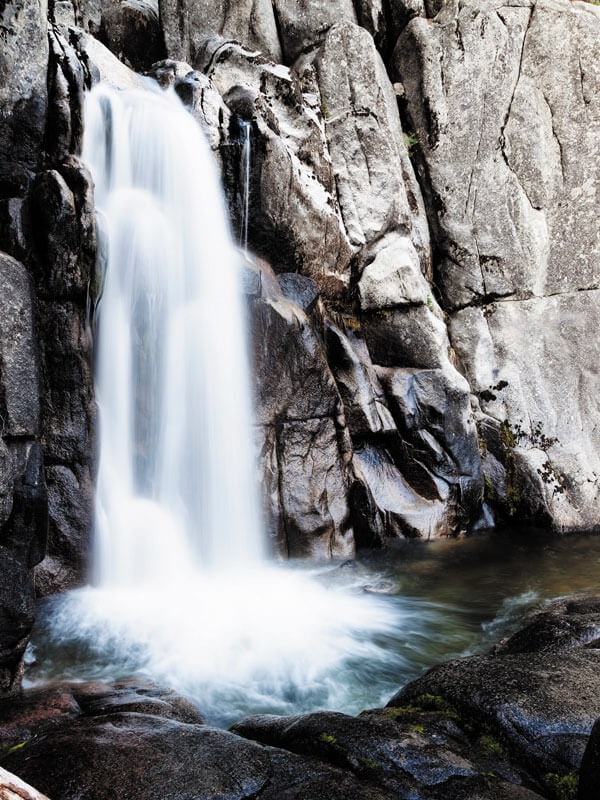
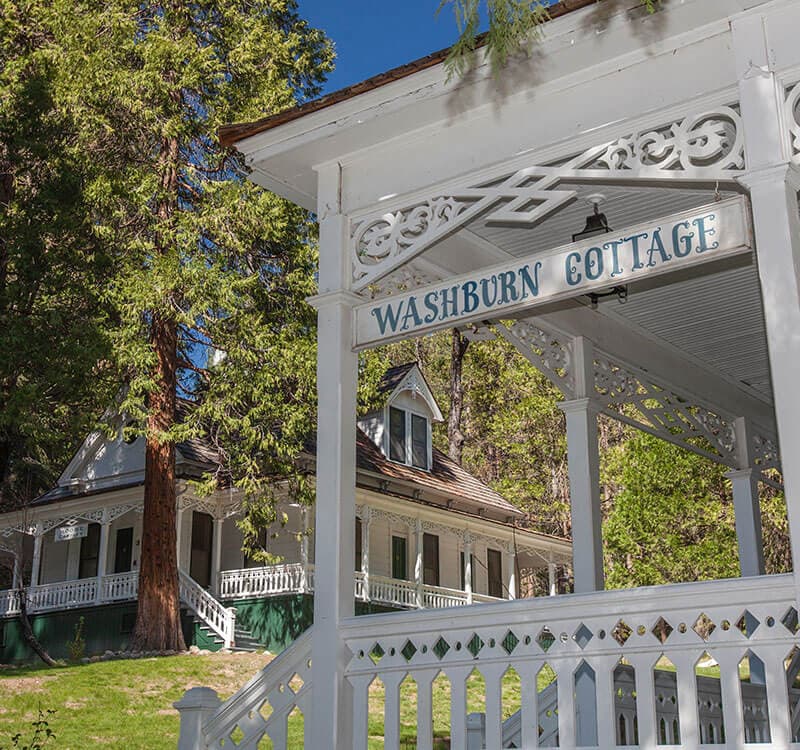
Wawona’s History
If someone were to make a movie about Wawona, CA, it would be equal parts documentary and drama, and filled with the pivotal moments and epic characters that made Yosemite National Park what it is today.
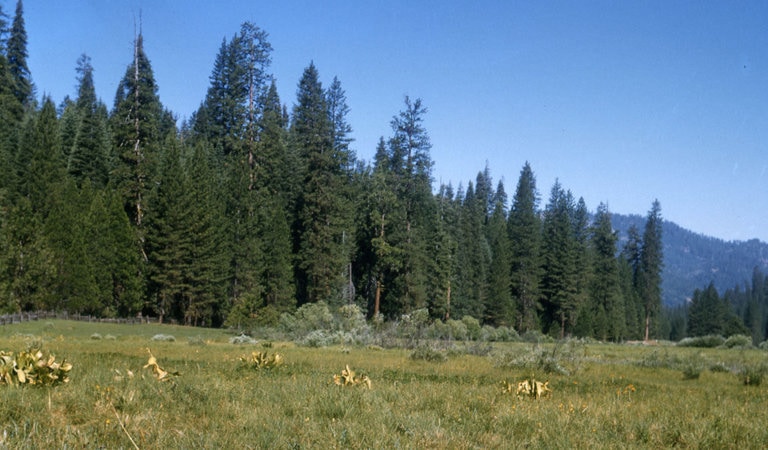
Pallachun
Wawona played an integral role in Native American history. When the Southern Miwuk traveled between the Mariposa County foothills and Yosemite Valley, Wawona was the halfway point of their journey. They called it “Pallachun,” meaning “a good place to stay or stop,” for its mild year-round weather and wide-open vistas. They would camp and trade at the Wawona meadows during their treks between Yosemite Valley and the surrounding Sierra foothills.
Later it was renamed “Wah Who Nau,” or Big Tree, for the giant sequoia groves nearby and phonetic for the hoot of the great horned owls that lived there. Local tribes believed the “Big Trees” to be sacred, and the owl was the guardian spirit of the giant sequoias. Wawona became the accepted name in the 1880s.
Yosemite Grant
The California Gold Rush of 1849 brought a tidal wave of gold fever-fueled migration to Yosemite Mariposa County. Many discovered the true treasure of Gold Country lay not below the ground but above: bucolic Sierra foothill terrain and alpine majesty, the likes never before seen. In 1864, President Abraham Lincoln signed a bill establishing Yosemite Valley and Mariposa Grove as protected wilderness areas reserved from settlement and locally administered by the State of California. Called the Yosemite Grant, it was the first time in U.S. history that land was designated for public use and preservation, and is viewed by many as the birth of the national park system. Though not included in the Yosemite Grant, Wawona was perfectly positioned between the two newly protected areas.
Galen Clark
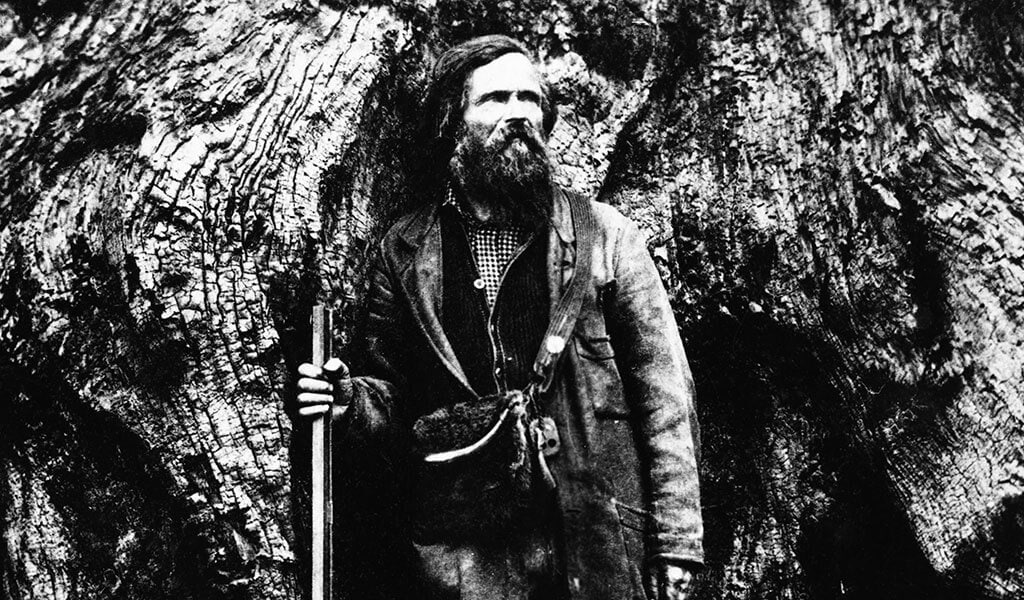
Galen Clark, Yosemite’s first guardian stands next to the Grizzly Giant sequoia tree in the Mariposa Grove (around 1860).
The Yosemite Grant created a commission for oversight and a new role, the “Guardian of Yosemite. ” Enter Galen Clark. Clark – by some accounts a native Canadian, by others (including his own) a New Englander – developed a passion for Yosemite when he first visited the area in 1853 as part of a pioneer tourist party. Staying in Mariposa County, he engaged in mining and surveying Government land.
He elected to settle in the meadowlands of Wawona, building a log cabin and rest stop for travelers known as Clark’s Station. He provided adventurous travelers (John Muir among them) with a place to graze their horses, dine and stay while he regaled them with conversation on eclectic topics encompassing local fauna, flora, Native American history, geology, and more.
Clark was a visionary character and he recognized that the development of roads for stage travel would be essential to support the fast-growing tourism trade. He channeled earnings from his waystation to fund improvements, additions of land, and the construction of access roads in and around Wawona.
The Washburn Brothers

The Washburns contributed to much of Yosemite’s infrastructure development including the cottage at Wawona Hotel which still bears their name. Photo: Marta Czajkowska
Clark’s role as Guardian of Yosemite was time-consuming and left him precious little time to manage Clark’s Station. Deciding to move permanently to Yosemite Valley, Clark sold his land and enterprise in late 1874 to another pioneering Yosemite family, the Washburns. Recognizing a critical need for infrastructure to support the growing tourism market, the road-building Washburn brothers –John, Henry, & Edward – moved west to the mountains of California from their home in Vermont and built a number of structures in Wawona including the Wawona Hotel.
The Washburn holding grew from 160 to 4,000 acres around Wawona and from one building to seven as word spread about visiting Yosemite. The Washburns expanded their operation by building the 23-mile Wawona Road from Wawona into Yosemite Valley in 1874-75. The road was completed in just four months by the hard work of hired Chinese immigrants using hand picks, shovels, and wheelbarrows to connect the Mariposa Grove of Giant Sequoias to Yosemite Valley. In 1882 the Washburns formed the Yosemite Stage and Turnpike Company, and tourism never looked back.
Washburn ownership of Wawona continued until 1932 when an agreement was reached between their Wawona Hotel Co. and the U.S. Government to purchase the hotel and nearly 4,000 surrounding acres. President Hoover signed the Wawona Proclamation, placing the Wawona Basin within the auspice of Yosemite National Park, and the Wawona area has continued to cast a spell over park visitors ever since.
Buffalo Soldiers

African American infantrymen from the US Army served as protectors of Yosemite National Park. They were nicknamed Buffalo Soldiers because their hair was reminiscent of the hair on a Buffalo.
A new group of guardians arrived on horseback in Southern Yosemite in 1899. The Buffalo Soldiers were a troop of African American Army infantrymen called upon to safeguard the newly protected Yosemite Grant lands. They were also involved in the building of roads and trails that are still in use today. In the Wawona area, Buffalo Soldiers created an arboretum along the South Fork of the Merced River in Yosemite in 1904 – widely considered the first marked nature trail and museum in a national park.
Services in Wawona
Staying in Wawona doesn’t mean trekking miles to get food or supplies. Visit the Pine Tree Market, a local family-owned grocery store Two grocery stores are conveniently located in Wawona, one right on Highway 41 as you pass through the small mountain hamlet. The other is tucked away on Chilnualna Falls Road within the area’s residential community – or fuel up at the Wawona Gas Station, conveniently located right on Highway 41 as you pass through the small mountain hamlet.
Looking for dining options? The Wawona Hotel’s Dining Room has been serving up fantastic meals since the 1800s – and given that you visit in the warmer months, you can join its long list of satisfied guests.

